Yoann Altmann
Statistical modelling and Bayesian inversion for a Compton imaging system: application to radioactive source localisation
Feb 16, 2024Abstract:This paper presents a statistical forward model for a Compton imaging system, called Compton imager. This system, under development at the University of Illinois Urbana Champaign, is a variant of Compton cameras with a single type of sensors which can simultaneously act as scatterers and absorbers. This imager is convenient for imaging situations requiring a wide field of view. The proposed statistical forward model is then used to solve the inverse problem of estimating the location and energy of point-like sources from observed data. This inverse problem is formulated and solved in a Bayesian framework by using a Metropolis within Gibbs algorithm for the estimation of the location, and an expectation-maximization algorithm for the estimation of the energy. This approach leads to more accurate estimation when compared with the deterministic standard back-projection approach, with the additional benefit of uncertainty quantification in the low photon imaging setting.
Accelerated Bayesian imaging by relaxed proximal-point Langevin sampling
Aug 18, 2023Abstract:This paper presents a new accelerated proximal Markov chain Monte Carlo methodology to perform Bayesian inference in imaging inverse problems with an underlying convex geometry. The proposed strategy takes the form of a stochastic relaxed proximal-point iteration that admits two complementary interpretations. For models that are smooth or regularised by Moreau-Yosida smoothing, the algorithm is equivalent to an implicit midpoint discretisation of an overdamped Langevin diffusion targeting the posterior distribution of interest. This discretisation is asymptotically unbiased for Gaussian targets and shown to converge in an accelerated manner for any target that is $\kappa$-strongly log-concave (i.e., requiring in the order of $\sqrt{\kappa}$ iterations to converge, similarly to accelerated optimisation schemes), comparing favorably to [M. Pereyra, L. Vargas Mieles, K.C. Zygalakis, SIAM J. Imaging Sciences, 13, 2 (2020), pp. 905-935] which is only provably accelerated for Gaussian targets and has bias. For models that are not smooth, the algorithm is equivalent to a Leimkuhler-Matthews discretisation of a Langevin diffusion targeting a Moreau-Yosida approximation of the posterior distribution of interest, and hence achieves a significantly lower bias than conventional unadjusted Langevin strategies based on the Euler-Maruyama discretisation. For targets that are $\kappa$-strongly log-concave, the provided non-asymptotic convergence analysis also identifies the optimal time step which maximizes the convergence speed. The proposed methodology is demonstrated through a range of experiments related to image deconvolution with Gaussian and Poisson noise, with assumption-driven and data-driven convex priors.
Unsupervised Hyperspectral and Multispectral Images Fusion Based on the Cycle Consistency
Jul 07, 2023Abstract:Hyperspectral images (HSI) with abundant spectral information reflected materials property usually perform low spatial resolution due to the hardware limits. Meanwhile, multispectral images (MSI), e.g., RGB images, have a high spatial resolution but deficient spectral signatures. Hyperspectral and multispectral image fusion can be cost-effective and efficient for acquiring both high spatial resolution and high spectral resolution images. Many of the conventional HSI and MSI fusion algorithms rely on known spatial degradation parameters, i.e., point spread function, spectral degradation parameters, spectral response function, or both of them. Another class of deep learning-based models relies on the ground truth of high spatial resolution HSI and needs large amounts of paired training images when working in a supervised manner. Both of these models are limited in practical fusion scenarios. In this paper, we propose an unsupervised HSI and MSI fusion model based on the cycle consistency, called CycFusion. The CycFusion learns the domain transformation between low spatial resolution HSI (LrHSI) and high spatial resolution MSI (HrMSI), and the desired high spatial resolution HSI (HrHSI) are considered to be intermediate feature maps in the transformation networks. The CycFusion can be trained with the objective functions of marginal matching in single transform and cycle consistency in double transforms. Moreover, the estimated PSF and SRF are embedded in the model as the pre-training weights, which further enhances the practicality of our proposed model. Experiments conducted on several datasets show that our proposed model outperforms all compared unsupervised fusion methods. The codes of this paper will be available at this address: https: //github.com/shuaikaishi/CycFusion for reproducibility.
Robust real-time imaging through flexible multimode fibers
Oct 25, 2022Abstract:Conventional endoscopes comprise a bundle of optical fibers, associating one fiber for each pixel in the image. In principle, this can be reduced to a single multimode optical fiber (MMF), the width of a human hair, with one fiber spatial-mode per image pixel. However, images transmitted through a MMF emerge as unrecognisable speckle patterns due to dispersion and coupling between the spatial modes of the fiber. Furthermore, speckle patterns change as the fiber undergoes bending, making the use of MMFs in flexible imaging applications even more complicated. In this paper, we propose a real-time imaging system using flexible MMFs, but which is robust to bending. Our approach does not require access or feedback signal from the distal end of the fiber during imaging. We leverage a variational autoencoder (VAE) to reconstruct and classify images from the speckles and show that these images can still be recovered when the bend configuration of the fiber is changed to one that was not part of the training set. We utilize a MMF $300$ mm long with a 50 $\mu$m core for imaging $10\times 10$ cm objects placed approximately at $20$ cm from the fiber and the system can deal with a change in fiber bend of 50$^\circ$ and range of movement of 8 cm.
Fast Scalable Image Restoration using Total Variation Priors and Expectation Propagation
Oct 04, 2021



Abstract:This paper presents a scalable approximate Bayesian method for image restoration using total variation (TV) priors. In contrast to most optimization methods based on maximum a posteriori estimation, we use the expectation propagation (EP) framework to approximate minimum mean squared error (MMSE) estimators and marginal (pixel-wise) variances, without resorting to Monte Carlo sampling. For the classical anisotropic TV-based prior, we also propose an iterative scheme to automatically adjust the regularization parameter via expectation-maximization (EM). Using Gaussian approximating densities with diagonal covariance matrices, the resulting method allows highly parallelizable steps and can scale to large images for denoising, deconvolution and compressive sensing (CS) problems. The simulation results illustrate that such EP methods can provide a posteriori estimates on par with those obtained via sampling methods but at a fraction of the computational cost. Moreover, EP does not exhibit strong underestimation of posteriori variances, in contrast to variational Bayes alternatives.
Patch-Based Image Restoration using Expectation Propagation
Jun 18, 2021



Abstract:This paper presents a new Expectation Propagation (EP) framework for image restoration using patch-based prior distributions. While Monte Carlo techniques are classically used to sample from intractable posterior distributions, they can suffer from scalability issues in high-dimensional inference problems such as image restoration. To address this issue, EP is used here to approximate the posterior distributions using products of multivariate Gaussian densities. Moreover, imposing structural constraints on the covariance matrices of these densities allows for greater scalability and distributed computation. While the method is naturally suited to handle additive Gaussian observation noise, it can also be extended to non-Gaussian noise. Experiments conducted for denoising, inpainting and deconvolution problems with Gaussian and Poisson noise illustrate the potential benefits of such flexible approximate Bayesian method for uncertainty quantification in imaging problems, at a reduced computational cost compared to sampling techniques.
Sparse Linear Spectral Unmixing of Hyperspectral images using Expectation-Propagation
Jun 18, 2021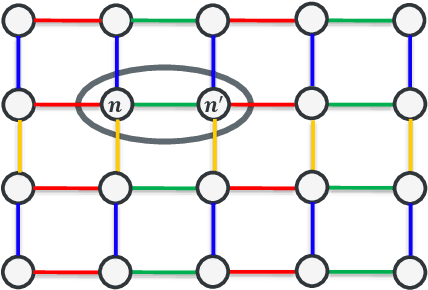
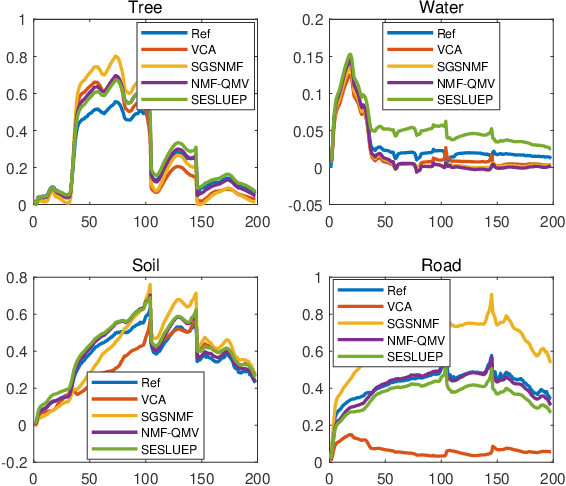
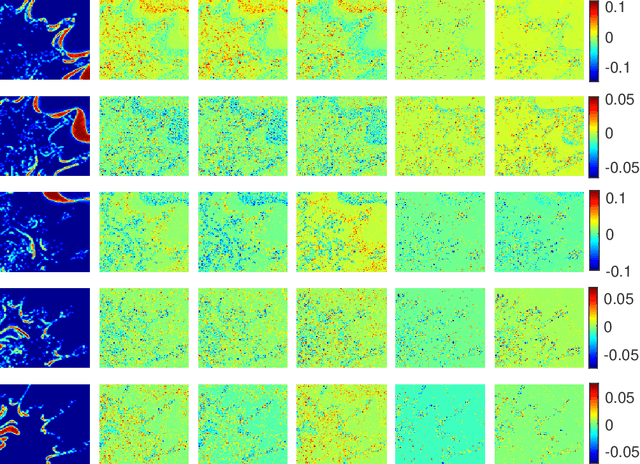
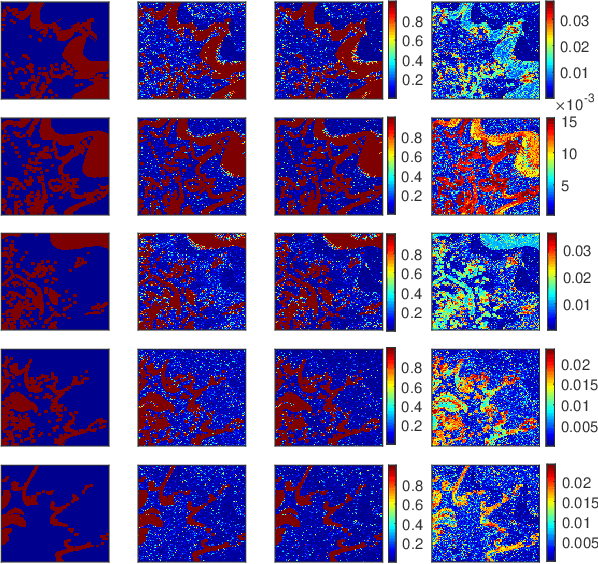
Abstract:This paper presents a novel Bayesian approach for hyperspectral image unmixing. The observed pixels are modeled by a linear combination of material signatures weighted by their corresponding abundances. A spike-and-slab abundance prior is adopted to promote sparse mixtures and an Ising prior model is used to capture spatial correlation of the mixture support across pixels. We approximate the posterior distribution of the abundances using the expectation-propagation (EP) method. We show that it can significantly reduce the computational complexity of the unmixing stage and meanwhile provide uncertainty measures, compared to expensive Monte Carlo strategies traditionally considered for uncertainty quantification. Moreover, many variational parameters within each EP factor can be updated in a parallel manner, which enables mapping of efficient algorithmic architectures based on graphics processing units (GPU). Under the same approximate Bayesian framework, we then extend the proposed algorithm to semi-supervised unmixing, whereby the abundances are viewed as latent variables and the expectation-maximization (EM) algorithm is used to refine the endmember matrix. Experimental results on synthetic data and real hyperspectral data illustrate the benefits of the proposed framework over state-of-art linear unmixing methods.
Seeing Around Corners with Edge-Resolved Transient Imaging
Feb 17, 2020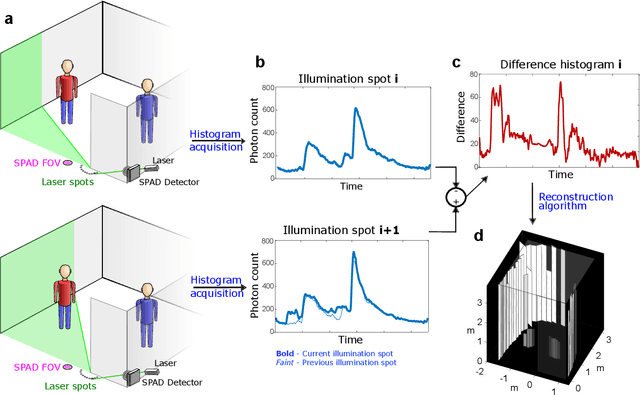
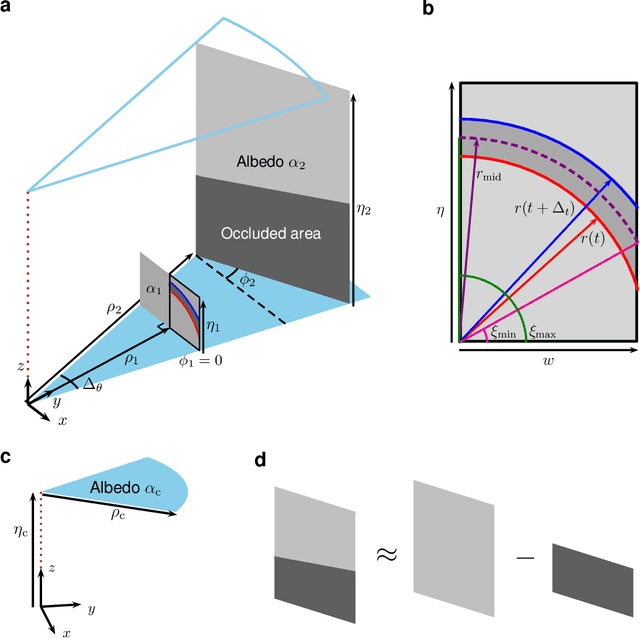

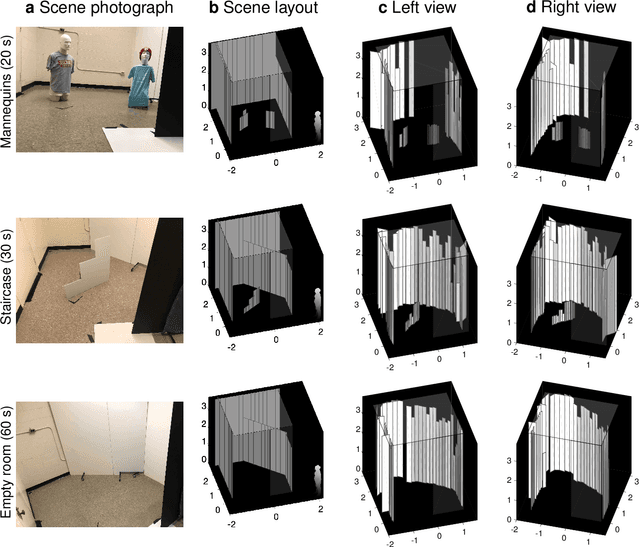
Abstract:Non-line-of-sight (NLOS) imaging is a rapidly growing field seeking to form images of objects outside the field of view, with potential applications in search and rescue, reconnaissance, and even medical imaging. The critical challenge of NLOS imaging is that diffuse reflections scatter light in all directions, resulting in weak signals and a loss of directional information. To address this problem, we propose a method for seeing around corners that derives angular resolution from vertical edges and longitudinal resolution from the temporal response to a pulsed light source. We introduce an acquisition strategy, scene response model, and reconstruction algorithm that enable the formation of 2.5-dimensional representations -- a plan view plus heights -- and a 180$^{\circ}$ field of view (FOV) for large-scale scenes. Our experiments demonstrate accurate reconstructions of hidden rooms up to 3 meters in each dimension.
Patch-based Sparse Representation For Bacterial Detection
Oct 29, 2018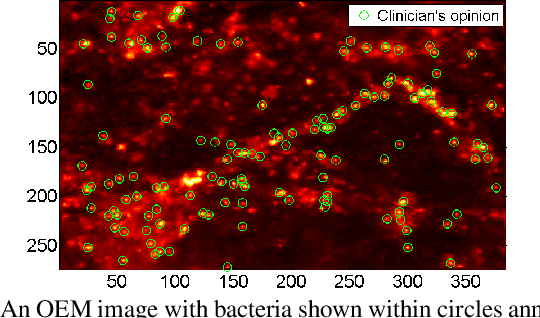
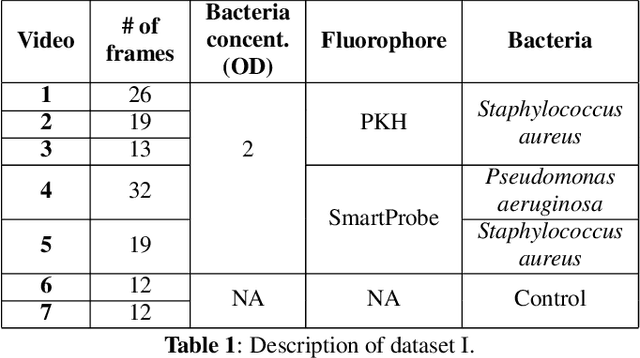
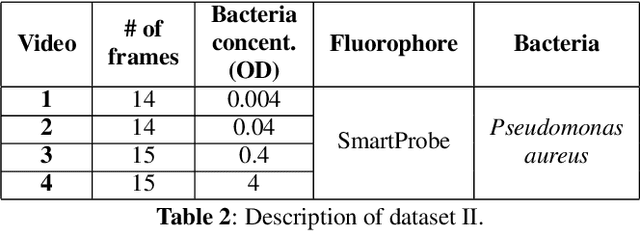

Abstract:In this paper, we propose a supervised approach for bacterial detection in optical endomicroscopy images. This approach splits each image into a set of overlapping patches and assumes that observed intensities are linear combinations of the actual intensity values associated with background image structures, corrupted by additive Gaussian noise and potentially by a sparse outlier term modelling anomalies (which are considered to be candidate bacteria). The actual intensity term representing background structures is modelled as a linear combination of a few atoms drawn from a dictionary which is learned from bacteria-free data and then fixed while analyzing new images. The bacteria detection task is formulated as a minimization problem and an Alternating Direction Method of Multipliers (ADMM) is then used to estimate the unknown parameters. Simulations conducted using two ex vivo lung datasets show good detection and correlation performance between bacteria counts identified by a trained clinician and those of the proposed method.
Deconvolution and Restoration of Optical Endomicroscopy Images
Aug 28, 2018



Abstract:Optical endomicroscopy (OEM) is an emerging technology platform with preclinical and clinical imaging applications. Pulmonary OEM via fibre bundles has the potential to provide in vivo, in situ molecular signatures of disease such as infection and inflammation. However, enhancing the quality of data acquired by this technique for better visualization and subsequent analysis remains a challenging problem. Cross coupling between fiber cores and sparse sampling by imaging fiber bundles are the main reasons for image degradation, and poor detection performance (i.e., inflammation, bacteria, etc.). In this work, we address the problem of deconvolution and restoration of OEM data. We propose a hierarchical Bayesian model to solve this problem and compare three estimation algorithms to exploit the resulting joint posterior distribution. The first method is based on Markov chain Monte Carlo (MCMC) methods, however, it exhibits a relatively long computational time. The second and third algorithms deal with this issue and are based on a variational Bayes (VB) approach and an alternating direction method of multipliers (ADMM) algorithm respectively. Results on both synthetic and real datasets illustrate the effectiveness of the proposed methods for restoration of OEM images.
 Add to Chrome
Add to Chrome Add to Firefox
Add to Firefox Add to Edge
Add to Edge